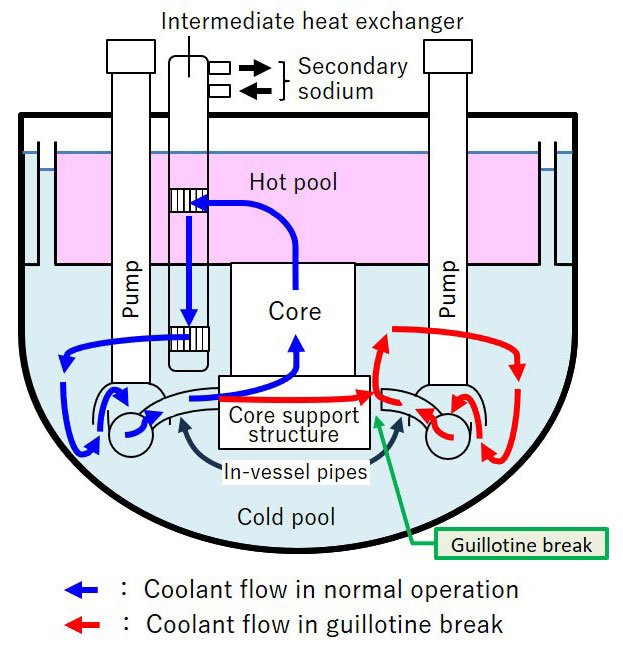Publication Date: April 11, 2025
Access counts:0
JAEA Has Confirmed the Safety of a Pool-Type SFR Under an In-Vessel Pipe Break

Fig. 1 Coolant flow in a guillotine break
The pool-type sodium-cooled fast reactor (SFR), Japan has been developing as the candidate of next-generation SFR is characterized by the intermediate heat changer that directly transfers heat of coolant between the primary and secondary systems and by the primary coolant piping (in-vessel pipes) installed in the reactor vessel (RV). Thanks to them, even if an in-vessel pipe break occurs, the damage does not spread outside the RV, preventing other consequences such as sodium-air interaction.
To confirm the safety of SFR, safety assessment results must show that the reactor does not cause radioactive material release if a design basis accident (DBA) occurs, which is an accident typical of the reactor type. One of the DBAs of a pool-type SFR is an in-vessel pipe break because the inner pressure of the piping at rated operation is high.
In a guillotine break (Fig. 1), much of the cold sodium from the pump will flow into the cold pool without passing through the core. This would cause a rapid coolant flow rate decrease in the core, increase the temperature of the fuel, and break the cladding, leading to radioactive material release into the RV. To prevent this, the reactor must be shut down to ensure core integrity by inserting control rods into the core. A wide variety of in-vessel pipe-break simulation analyses have been carried out using computer program that deals neutron kinetics and thermal-hydraulics for the reactor system. JAEA has confirmed that an in-vessel pipe break will not damage the core by shutting down the reactor with the core being cooled.
If you have any comments or feedback about this page, please click the button to share your thoughts with us.
